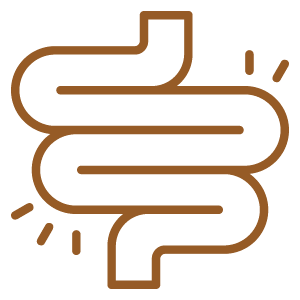Anand, P., Sundaram, C., Jhurani, S., Kunnumakkara, A. B., & Aggarwal, B. B. (2008). Curcumin and cancer: an "old-age" disease with an "age-old" solution. Cancer letters, 267(1), 133–164. https://doi.org/10.1016/j.canlet.2008.03.025
Ashrafizadeh, M., Ahmadi, Z., Mohammadinejad, R., Farkhondeh, T., & Samarghandian, S. (2020). Curcumin activates the Nrf2 pathway and induces cellular protection against oxidative injury. Current Molecular Medicine, 20(2), 116–133. https://doi.org/10.2174/1566524019666191016150757
Dixit, V. P., Jain, P., & Joshi, S. C. (1988). Hypolipidaemic effects of Curcuma longa L and Nardostachys jatamansi, DC in triton-induced hyperlipidaemic rats. Indian journal of physiology and pharmacology, 32(4), 299–304. https://pubmed.ncbi.nlm.nih.gov/3215683/
Jagetia, G. C., & Aggarwal, B. B. (2007). "Spicing up" of the immune system by curcumin. Journal of Clinical Immunology, 27(1), 19-35. https://doi.org/10.1007/s10875-006-9066-7
Johnson, J. J., & Mukhtar, H. (2007). Curcumin for chemoprevention of colon cancer. Cancer Letters, 255(2), 170-181. https://doi.org/10.1016/j.canlet.2007.03.005
Jurenka, J. S. (2009). Anti-inflammatory properties of curcumin, a major constituent of Curcuma longa: A review of preclinical and clinical research. Alternative Medicine Review, 14(2), 141–153. https://pubmed.ncbi.nlm.nih.gov/19594223/
Kunnumakkara, A. B., Hegde, M., Parama, D., Girisa, S., Kumar, A., Daimary, U. D., Garodia, P., Yenisetti, S. C., Oommen, O. V., & Aggarwal, B. B. (2023). Role of Turmeric and Curcumin in Prevention and Treatment of Chronic Diseases: Lessons Learned from Clinical Trials. ACS pharmacology & translational science, 6(4), 447–518. https://doi.org/10.1021/acsptsci.2c00012
Kuptniratsaikul, V., Dajpratham, P., Taechaarpornkul, W., Buntragulpoontawee, M., Lukkanapichonchut, P., Chootip, C., Saengsuwan, J., Tantayakom, K., & Laongpech, S. (2014). Efficacy and safety of Curcuma domestica extracts compared with ibuprofen in patients with knee osteoarthritis: a multicenter study. Clinical Interventions in Aging, 9, 451–458. https://doi.org/10.2147/CIA.S58535
Kuttan, R., Bhanumathy, P., Nirmala, K., & George, M. C. (1985). Potential anticancer activity of turmeric (Curcuma longa). Cancer Letters, 29(2), 197-202. https://doi.org/10.1016/0304-3835(85)90159-4
Kwiecien, S., Magierowski, M., Majka, J., Ptak-Belowska, A., Wojcik, D., Sliwowski, Z., Magierowska, K., & Brzozowski, T. (2019). Curcumin: A Potent Protectant against Esophageal and Gastric Disorders. International journal of molecular sciences, 20(6), 1477. https://doi.org/10.3390/ijms20061477
Liu, X., Zhang, R., Shi, H., Li, X., Li, Y., Taha, A., & Xu, C. (2018). Protective effect of curcumin against ultraviolet A irradiation-induced photoaging in human dermal fibroblasts. Molecular Medicine Reports, 17(5), 7227-7237. https://doi.org/10.3892/mmr.2018.8791
McIntyre, A. (2019). The complete herbal tutor. Aeon.
Mills, S., & Bone, K. (2013). Principles and practice of phytotherapy (2nd ed.). Elsevier.
Prasad, S., & Aggarwal, B. B. (2011). Turmeric, the Golden Spice: From Traditional Medicine to Modern Medicine. In I. F. F. Benzie & S. Wachtel-Galor (Eds.), Herbal Medicine: Biomolecular and Clinical Aspects (2nd ed., Chapter 13). CRC Press/Taylor & Francis. https://doi.org/10.1201/b10787-14
Ramirez-Bosca, A., Soler, A., Carrion, M. A., Diaz-Alperi, J., Bernd, A., Pineda-Lucena, A., ... & Bernd, A. (2000). An hydroalcoholic extract of Curcuma longa lowers cholesterol and triglycerides in high cholesterol subjects. Journal of Ethnopharmacology, 74(1), 49-51. https://doi.org/10.1016/S0378-8741(00)00238-7
Rasyid, A., & Lelo, A. (1999). The effect of curcumin and placebo on human gall-bladder function: An ultrasound study. Alimentary Pharmacology & Therapeutics, 13(2), 245-249. https://doi.org/10.1046/j.1365-2036.1999.00464.x
Satoskar, R. R., Shah, S. J., & Shenoy, S. G. (1986). Evaluation of anti-inflammatory property of curcumin (diferuloyl methane) in patients with postoperative inflammation. International journal of clinical pharmacology, therapy, and toxicology, 24(12), 651–654. https://pubmed.ncbi.nlm.nih.gov/3546166/
Savaringal, J. P., & B., S. K. (2017). Anti-ulcer effect of rhizome of Curcuma longa Linn, by the method of pyloric ligation. International Journal of Basic & Clinical Pharmacology, 7(1), 20–26. https://doi.org/10.18203/2319-2003.ijbcp20175480
Shishodia, S., Sethi, G., & Aggarwal, B. B. (2005). Curcumin: Getting back to the roots. Annals of the New York Academy of Sciences, 1056(1), 206-217. https://doi.org/10.1196/annals.1352.010
Shoba, G., Joy, D., Joseph, T., Majeed, M., Rajendran, R., & Srinivas, P. S. (1998). Influence of piperine on the pharmacokinetics of curcumin in animals and human volunteers. Planta Medica, 64(4), 353–356. https://doi.org/10.1055/s-2006-957450
Small, G. W., Siddarth, P., Li, Z., Miller, K. J., Ercoli, L. M., Emerson, N. D., Martinez, J., Wong, K. P., Liu, J., Merrill, D. A., & Huang, S. C. (2018). Memory and brain amyloid and tau effects of a bioavailable form of curcumin in non-demented adults: A double-blind, placebo-controlled 18-month trial. The American Journal of Geriatric Psychiatry, 26(3), 266-277. https://doi.org/10.1016/j.jagp.2017.10.010
Sidhu, G. S., Mani, H., Gaddipati, J. P., Singh, A. K., Seth, P., Banaudha, K. K., ... & Maheshwari, R. K. (1999). Curcumin enhances wound healing in streptozotocin induced diabetic rats and genetically diabetic mice. Wound Repair and Regeneration, 7(5), 362-374. https://doi.org/10.1046/j.1524-475x.1999.00362.x
Tang, M., Larson-Meyer, D.E., & Liebman, M. (2008). Effect of cinnamon and turmeric on urinary oxalate excretion, plasma lipids, and plasma glucose in healthy subjects. American Journal of Clinical Nutrition, 87(5), 1262-1267. https://doi.org/10.1093/ajcn/87.5.1262
Tønnesen, H.H., Karlsen, J., & Henegouwen, G.M. (1986). Studies on curcumin and curcuminoids VIII. Photochemical stability of curcumin. Zeitschrift für Lebensmittel-Untersuchung und Forschung, 183, 116-122. https://doi.org/10.1007/BF01041928














